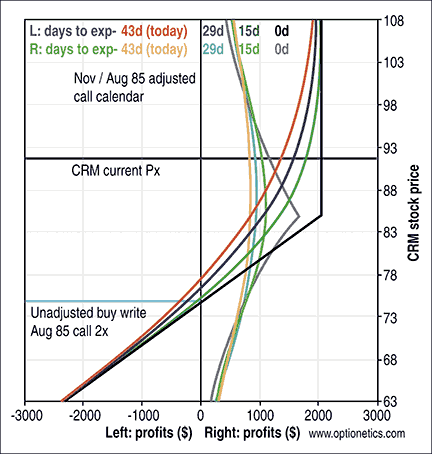Q&A

Explore Your Options
Got a question about options? Tom Gentile is the chief options strategist at Optionetics (www.optionetics.com), an education and publishing firm dedicated to teaching investors how to minimize their risk while maximizing profits using options. To submit a question, post it on the Stocks & Commodities website Message-Boards. Answers will be posted there, and selected questions will appear in future issues of S&C.
WHO’S GETTING FILLED?
Why do my option orders get filled easily at times when placed between the bid and offer, but other times the market makers change the quote to reflect my bid or offer?
Getting a fill on a placed bid or offer versus your order remaining unfilled is generally due to a couple of key factors.
The first dynamic involves sizing up the liquidity in the product you’re attempting to get a position in. Liquidity provision should take trading volume into account. The more the merrier, as they say. Second, if a stock or index doesn’t average thousands of contracts daily, it’s a good idea to look at a few days’ worth of contract volume and the individual prints representing that activity.
Typically, smaller and more frequent order flow is preferred over sporadic and larger block prints over the same period. In the former, traders are more likely to get a fill, except maybe on the largest of orders, as we know there are other traders watching and actively trading.
In the latter situation, large volume at the end of the day attributed to one or two substantial prints is far from conclusive in regards to actual liquidity. The difference in the two scenarios is akin to a heads-up poker game versus the main event on day 1 of the World Series of Poker.
The distance between the bid and ask of an individual option market is another factor tied to liquidity and whether an order is filled. Intuitively, tighter markets would suggest a better chance at getting filled. However, as with wider bid/ask spreads, volatility trends and what the other option order flow is and has been doing in the product will play a central role in whether you should expect a fill midmarket.
For instance, ask yourself if the order you’re placing on the same side of current volatility trends — long put with implieds — is rising. If the answer is yes, you’re less likely to get a fill midmarket. The market maker, whom we might expect to be on the other side of the trade, might be increasing his existing risk, but off his quoted market, which they’ve updated to reflect strong demand from existing buyers and a new price level where they are willing to sell additional contracts.
On the other hand, in the same rising implied volatility situation, if your order was a put sale, the market maker would be more likely to give you a fill midmarket. As your order is on the other side of the dominant “long protective” contract demand, the market maker would be able to offset or hedge some of their risk at a price point below where the bulk of the order flow is forcing them to take on additional contract risk.
THE OPTION TO ADJUST
I’ve been thinking about doing some buy-writes with out-of-the money calls in stocks I’m bullish on. Would it make sense to adjust this type of position into a longtime spread once the shares reach the sold strike so I can lock in gains and reduce risk?
That’s a great question! You’ve been doing your homework. Adjusting is key to increasing profitability and reducing variance or volatility in portfolio returns over the long run.
As this process of risk management relates to establishing a calendar or time spread from an existing and profitable buy-write, there is no definitive answer about whether this adjustment is the correct approach. But that’s not to say we can’t reach a more informed and confident decision regarding the adjusted calendar’s chance for success relative to the initial buy-write position.
Implied volatility, general market conditions, earnings, and a trader’s current outlook for the company and/or its stock price are important factors that should be considered if we are to place any option trade. Shown in Figure 1 is a risk overlay graph of this type of situation. The first position is an unadjusted buy-write in Salesforce.com (Crm) using two August 85 call contracts and stock from early April during a technical breakout and shares approaching $79.

figure1: Risk overlay
The second position is an adjustment several days later as shares of Crm put in a near test of $85 and the sold call’s strike. After selling out the stock, the trader purchases the November 85 call to establish a multimonth calendar.
Which is better? That’s up to the individual option strategist. But we can see which position is performing more profitably and which has a stronger line of defense, should shares falter from a level near $91 in the first half of July 2010.
In the end, the adjustment process facing option professionals daily is always going to be a game of give-and-take. The good news is, if we’re still not totally satisfied with our risk profile, which could be an adjusted calendar, there’s nothing to say we can’t design a position more in line with our current expectations.
Contributing analysis by senior Optionetics strategist Chris Tyler.